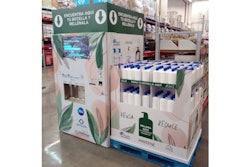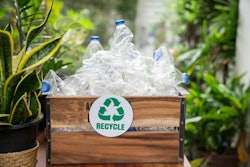Welcome to Sustainable Packaging Explained, your guide to sustainable materials, methods, and package design, produced by the Emerging Brands Alliance, in conjunction with Packaging World. Today's episode is highlighting the use of metal as a packaging material. Metal packaging has been around since the early 1800s.
It's earliest use for the safe preservation of food using a tin can. Soon after, the packaging format expanded into other segments, packaging cookies, tobacco, and tooth powder. Today, you can see metal being used for various products from soup to drink pouches. That's because packaging that employs metal as a barrier and structural layer plays a significant role in food preservation due to its excellent barrier properties.
That coupled with the infinite recyclability of metal makes it a popular choice for food and beverage packaging. According to a report from Smithers, the global metal packaging and coating market is forecasted to reach 114. 4 billion this year. Much of this figure can be attributed to beverage cans that continue to dominate the market, holding a share of almost [00:01:00] 45%.
Cans are the most commonly used metal packaging and are made from steel or aluminum. Steel containing cans are made from electrolytic tin plate or electrolytic chromium or chromium oxide coated steel, also known as tin free steel. One of the reasons there's been so much growth in metal can packaging is shifting consumer lifestyles.
Packaged and convenience food has become a staple in the hectic lives of consumers. But the main reason metal packaging and aluminum cans are so popular is because of the sustainability benefits they offer. Aluminum cans have a higher recycling rate and contain more recycled content than competing package types.
For example, they are recycled at more than twice the rate of PET bottles. Aluminum cans are lightweight, stackable, and strong, allowing brands to package and transport more product using less material. Packaging World editor Matt Reynolds tells us more about metal packaging. Often mistakenly called tin cans since the format historically has used some tin, metal packaging in the form of steel cans might seem old school.
And it is. But in terms [00:02:00] of sustainability. Good old steel can might just be about as good and as circular as it gets. Not only is the material itself recyclable, but it's easily sorted at material recovery facilities or MRFs. And it's a valuable material that's in demand with a lot of end markets. That further encourages reclamation and circularity.
Metal itself is a great and long lasting barrier. So in food or beverage applications, shelf life is optimized. That's a great check against food waste. Aluminum cans share many of these benefits, but are even more lightweight. Of course, for both of these materials, some CO2 is spent in extracting the ore from the earth.
But once the material is in circulation, it tends to stay there. Consumers know how to recycle, especially aluminum, and a properly disposed of aluminum can is likely to be back on shelves in the form of a new, unopened can in as quickly as two months. Aluminum makes up less than 1 percent of our land filled waste.
Since consumers are so well trained on how to recycle it. One complicating factor for recovery for aluminum cans for operations [00:03:00] like craft breweries is when they put pressure sensitive labels on the cans with some adhesives that can contaminate the material. But for the most part, that can be overcome with wash down prior to smelting.
I remember a story about an emerging brand approaching PMMI's Ask the Experts desk at Pet Pack Expo. The brand was packaging a food product in steel cans, but had hoped to learn about newer, lighter weight, more sustainable materials that he might switch to for packaging, thus to appeal to millennials and younger folks with sustainability on the mind.
Our expert David Smith, formerly of Johnson Johnson, broke the good news that this old school can would be hard to top in terms of a life cycle analysis.
Most of all, aluminum cans are most often recycled over and over again in what the Aluminum Association says is a truly circular, closed loop recycling process. When recycled, glass and plastic are often turned into a different product that is not recyclable or is unlikely to be recycled again. For example, a PET bottle might end up as carpet fiber or used to make clothing, but aluminum cans can be recycled infinitely to make new cans.
The U. S. aluminum industry recycles more than 40 billion cans a year. That's 90, 000 cans per minute. Metal packaging protects contents from contamination, spoilage, and damage at all stages of the supply chain. Metal packaging is often chosen for its high recycle rate, strength, and barrier properties.
However, as with any packaging material, it's imperative to conduct a comprehensive lifecycle analysis to determine if aluminum or [00:05:00] metal is the optimal choice for your product. Thanks for watching, and be sure to subscribe to our YouTube channel for more videos on sustainability, packaging, and scaling operations.
























